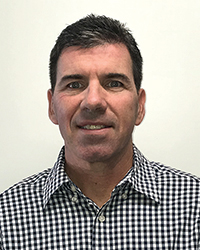News:
Spotlight Content
Posted: January 27, 2010
Rhode Island 2010 stabilization ahead as it becomes affordable again and presents opportunities
As we look forward to 2010, it's helpful to look back a little. As bad as 2009 felt in the real estate market, there was still activity. Sale prices and lease rates continued the decline of the last two years, although well located specific-use properties have maintained their value, which may have seemed inflated for the market. It is clear buyers' and sellers' expectations are converging, deals are getting done and there is a level of stabilization in the overall market.
Looking ahead, in the office market rents will continue to decline due to the availability of over two million square feet of office space statewide, with over one million square feet available in the Providence market alone. Landlords will have to continue to make concessions to attract tenants, as most of the activity revolves around relocation and renegotiation. Sale prices will remain at the same reduced rates or might go slightly lower depending on the location and condition.
Due to some specific driving forces, areas that should see some positive activity in Providence are the Jewelry / Knowledge district and the ManuCenter area along Allens Ave. The rehabilitation of 222 Richmond St. in the Knowledge District for Brown University's Alpert School of Medicine should commence in the 2nd quarter of 2010. In the same area, the city and the state are developing an overall development plan for the land that will become available due to the relocation of I-195, presenting new development potential. In the ManuCenter, Belvoir Properties continues its repositioning of former industrial buildings into office space, similar to the approach they took in the 1980s in the Jewelry District. This space is supporting a variety of tenants, many associated with the Rhode Island and Women and Infant's Hospitals.
In the industrial market, we see a continued decline in older manufacturing facilities with fewer conversions to either residential or office space due to a lack of incentives (i.e. historical tax credits) and overall economic conditions. Newer, well located and high bay facilities will maintain value due to a lack of options. New construction will still be limited to need-based, owner / occupied or tenant-specific use.
The Quonset Point / Davisville Commerce Park will be home to a major facility supporting the proposed wind farm in Block Island Sound. Similar green industries are becoming more prevalent in the market and LEED certification continues to be a significant element in all new development. We should see continued growth in this sector.
The retail market continues to reflect the overall economy with increasing vacancies and decreasing rents. Vacant space is lagging on the market with increases in areas that typically have had very low vacancy rates. The prime corridors - Rte. 2 in Warwick and Rte. 6 in Seekonk/East Providence - are experiencing unprecedented vacancies which are impacting rents. However, again opportunity is present as the lower rents will allow more national, regional and local retailers the opportunity and ability to locate along these prime corridors.
Commercial foreclosures are and will become more prevalent in the market, which will add additional downward pressure on rents and sale prices. While the state does not have the high profile properties that are present in other markets, participants in this section of the market are preparing for an increase in activity. In the last six months, the Gateway Building in Capitol Center, Precision Park in North Kingstown and Patriot Commons in East Greenwich have all been taken back by their mortgagees and are being repositioned for sale. This sector will present opportunities to buyers with access to cash and financing.
To sum up: we see the economic conditions presenting challenges to all market participants, but also see opportunities for buyers and tenants. Buyers are able to purchase properties at rates that we haven't seen in many years. For tenants, the market presents the chance to lock in more affordable lease rates and control overhead. The market appears to be headed for a period of stabilization as it becomes affordable again and presents opportunities to both in-state and out-of-state investors and tenants to locate in what is still considered a desirable area. The challenges remain lower rents, higher vacancies and access to financing. As the last year has shown, even in bad times activity continues and deals are consummated. As we see the market move toward stabilization, we anticipate continued activity as well as eventual appreciation in values and rents and increased absorption.
Tom Sweeney, SIOR, is vice president of Rodman Real Estate, Inc., Providence, R.I.
Tags:
Spotlight Content
MORE FROM Spotlight Content
Check out the New England Real Estate Journal's 2025 Fall Preview Spotlight
NEREJ’s Fall Preview is Out Now!
Explore our Fall Preview Spotlight, featuring exclusive Q&As with leading commercial real estate professionals and in-depth byline articles on today’s most relevant market topics. Gain insight into the trends, challenges, and opportunities shaping New England’s commercial real estate landscape this fall.
Explore our Fall Preview Spotlight, featuring exclusive Q&As with leading commercial real estate professionals and in-depth byline articles on today’s most relevant market topics. Gain insight into the trends, challenges, and opportunities shaping New England’s commercial real estate landscape this fall.

Columns and Thought Leadership

How do we manage our businesses in a climate of uncertainty? - by David O'Sullivan
These are uncertain times for the home building industry. We have the threat of tariffs mixed with high interest rates and lenders nervous about the market. Every professional, whether builder, broker, or architect, asks themselves, how do we manage our business in today’s climate? We all strive not just to succeed, but

Shallow-bay wins on 495/128: A renewal-driven market with a thin pipeline - by Nate Nickerson
The Boston industrial market entered mid-2025 in a bifurcated state. Large-block vacancy remains elevated, while shallow-bay along the 495/128 corridor continues to prove resilient. Fieldstone’s focus on this geography positions us squarely in the middle of a renewal-driven, supply-constrained

30 years on South Coast Rail: A journey to connect Southeastern Mass. with commuter rail - by Rick Carey
On March 24, 2025, a dream more than three decades in the making became a reality with the launch of the Massachusetts Bay Transportation Authority’s (MBTA) South Coast Rail commuter service. This milestone marks the completion of a project that overcame numerous starts and stops, including changes in leadership

How long should I hold a property for it to qualify as an investment property in connection with a 1031 tax-deferred exchange? - by Brendan Greene and Mark McCue
Internal Revenue Code (IRC) Section 1031 provides “No gain or loss shall be recognized on the exchange of property held for productive use in a trade or business or for investment if such property is exchanged solely for property of like kind which is to be held










.png)